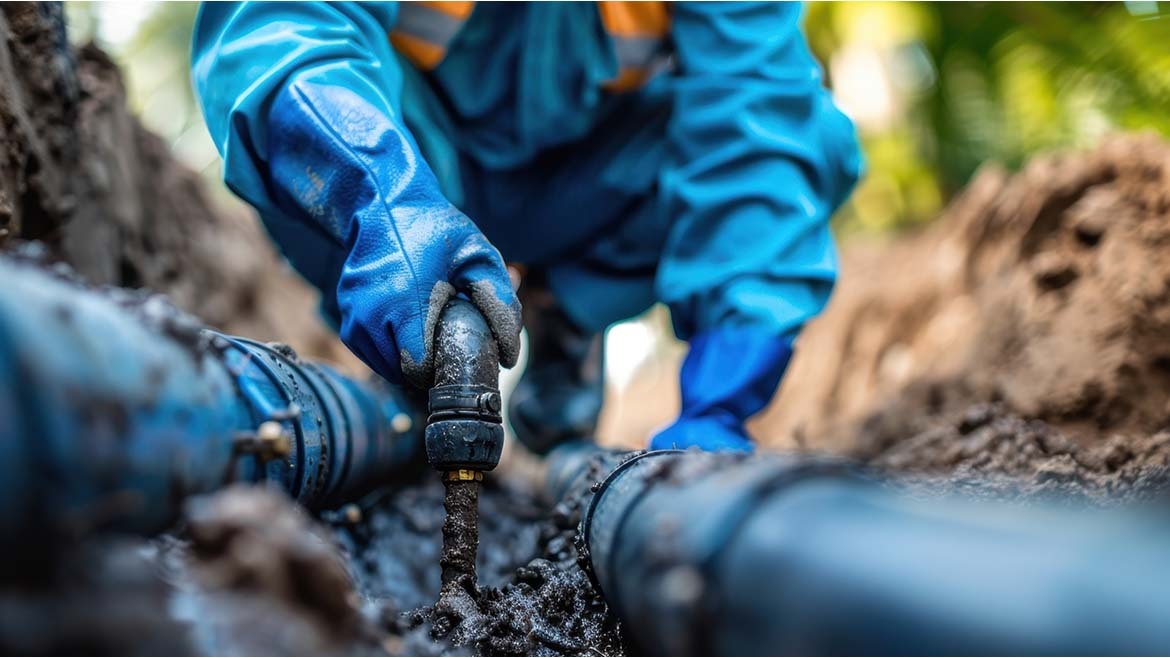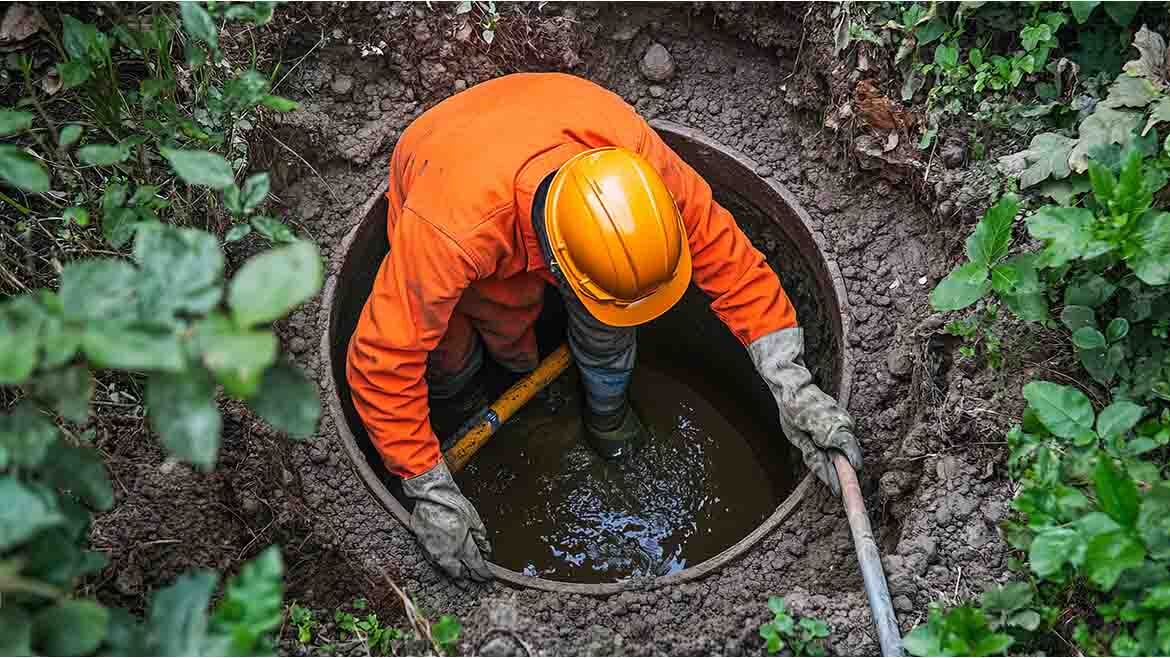Septic Tank Drain Field Problems: Causes, Signs, and Solutions
Most people think septic problems mean a full tank or messy backup inside the house. But often, the real trouble starts underground in the septic drain field.
This hidden part of your system does the hard work of filtering wastewater into the soil. According to the EPA, a healthy drain field is the backbone of a functioning septic system.
If it stops working properly, you could be dealing with costly and disruptive failures like standing water, sewage backups, or even property damage.
In this blog, we’ll look at the most common septic tank drain field problems, the warning signs you shouldn’t ignore, and what you can do to keep your system running smoothly. Stay tuned!

Common Septic Tank Drain Field Problems
- Soil Saturation
One of the most common causes of septic system failure is oversaturated soil. Heavy rainfall, flooding, or excess water from irrigation can overload the drain field. When the soil is waterlogged, it fails to filter the effluent properly, leading to pooling water and foul smells.
- Root Intrusion
Tree and shrub roots are always looking for water, and your drain field has plenty of it. Over time, those roots can sneak into the pipes, block them, and slow down the system. It’s also hard to spot this problem early since it happens underground.
- Clogged Pipes
Grease, non-biodegradable items, and too much waste can clog the small pipes in the drain field. When that happens, the wastewater can’t soak into the soil and may back up to the surface or even into your home.
- Compact or Poor Soil
Drain fields need loose soil to soak up water. If the soil is compacted because of building structures, parking vehicles, or it’s naturally heavy clay, the system can’t work well. Poor soil conditions often lead to the drain field failure signs, such as puddling or slow drainage indoors.
- Bacterial Imbalance
A septic system depends on bacteria to break down waste. Using too many harsh household cleaners or pouring chemicals into your drains can kill these helpful bacteria. Without enough bacterial activity, solids may pass into the drain field and clog it.
- Old or Failing Drain Field Design
Like any system, drain fields don’t last forever. Most of them are built to function for about 20-30 years with proper care. An old or too-small drain field can’t handle waste the way it should. This often causes problems like frequent backups, standing water in the yard, bad smells, and the system wearing out faster.
Here, it’s clear that most septic drain field problems happen because of how the system is used. The main causes of septic system failure include too much water, not pumping the tank, clogs from waste, roots, or poor soil. Knowing these causes helps you prevent costly repairs.
| Schedule Your Septic Service Today! |
What Are the Signs of Drain Field Failure?
If you’re wondering whether your drain field is in trouble, look for these signs of drain field failure.
- Slow drains throughout the house (sinks, showers, toilets).
- Sewage odors around the yard or near the drain field.
- Standing water or soggy ground above the field.
- Bright green, lush grass patches over the drain field area.
- Sewage backups inside your home, especially after heavy water use.
Catching these early signs can help you figure out septic system troubleshooting before the issue turns into a full system collapse.
How to Maintain a Septic Drain Field?
Did you know that with regular care, you can avoid many septic drain field problems?
- Pump Your Tank Regularly
Schedule pumping every 3-5 years, depending on your household size and water usage. This keeps solids from reaching and clogging the drain field.
- Watch Your Water Usage
- Do your laundry in smaller loads spread over the week instead of all in one day.
- Use low-flow faucets or showerheads to cut down water use.
- Fix any leaks quickly.
This helps keep too much water from flooding the drain field and prevents soil saturation.
- Be Careful What You Flush
- Always use septic-safe toilet paper because it breaks down easily and won’t clog the system.
- Avoid flushing things like grease, wipes, feminine products, paper towels, or harsh chemicals. These don’t break down and can block pipes or harm the helpful bacteria your system needs to work properly.
- Protect the Drain Field Area
- Do not park vehicles or place heavy equipment on it.
- Avoid planting trees or shrubs nearby.
- Direct roof runoff and gutter water away from the field.
- Schedule Professional Inspections
Regular checkups by septic experts can catch small issues before they turn into major septic drain field problems.
During an inspection, they can spot early warning signs, like slow drainage, soil saturation, or minor clogs that homeowners often miss. Fixing these small issues early keeps your drain field healthy and prevents costly failures later.
Questions That Most Homeowners Often Ask
| Protect Your Drain Field - Call Now! |
Takeaway
Your septic system depends on a healthy drain field to function properly. While tanks often get the most attention, neglecting the drain field can lead to costly and disruptive failures.
By watching for the signs of drain field failure, identifying the causes of septic system failure, and practicing regular maintenance, you can avoid major problems and keep your home’s wastewater system running smoothly.
If you notice any signs of drain field failure, don’t wait. Call a professional septic service immediately.
Troubleshoot Your Septic System With Advanced Septic Service LLC. to Keep Your Yard Dry & Safe
At Advanced Septic Service, we specialize in diagnosing and fixing both common septic tank issues and more complex septic drain field problems. Our team provides thorough inspections, pumping, and repair services to help extend the life of your system.
With over 25 years of experience, we’re the top septic system and grease trap service provider in the Greater Sacramento Area.
Call us today to book your septic care plan!
